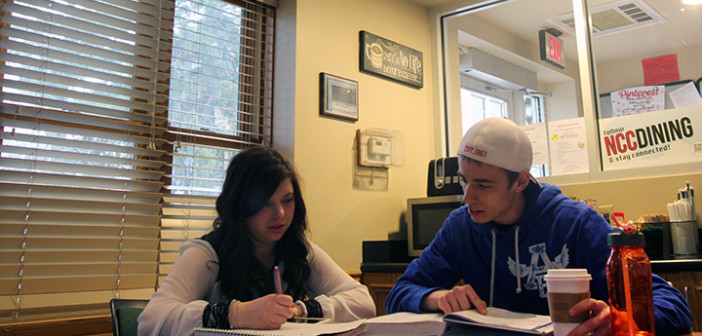Megann Horstead
Social Media Editor
North Central’s long-held tie to interdisciplinary study influences a number of aspects at the College—in curricular planning and scheduling, in shaping cultural events, in general education, in the faculty search process, in funding opportunities for programs and for faculty professional development.
Even so, interdisciplinary study is an area of study that may be unclear in its scope. Interdisciplinary study is defined as “a process of answering a question, solving a problem, or addressing a topic too broad or complex to be dealt with adequately by a single discipline or profession,” according to Klein and Newell’s Handbook of the Undergraduate Curriculum.
Director of Graduate Studies and Continuing Studies Dr. Peter Barger put it another way when he said, interdisciplinary bring together an idea that says that a number of different disciplines when tied together can feed into existing programs or draw on older disciplines to form new areas.”
Historically speaking, how did interdisciplinary study come to be?
Associate academic dean Dr. Francine Navakas said that in the ‘60s, interdisciplinary programs just pulled together a whole set of things without much organization or planning.
In explaining how after the introduction of interdisciplinary as a discipline it was found that it could be regarded as its own field and research methods, Navakas said some disciplines are very open-ended and have a variety of methods, but even they include some interdisciplinary study. Others are very closed, require that things are done in a specific way and professionals are attuned to this.
What does the College look do when depth is of interest to an interdisciplinary program?
Navakas said, “It is possible to achieve depth in interdisciplinary study by just putting the boundaries in different places than they were before. It’s kind of like carving out what the subject matter is differently and then achieving depth within that new field that you’ve created.”
While some schools place more value in disciplinary-specific study, NCC students are trained in both general education and interdisciplinary study. Navakas said that general education and interdisciplinary study alters how students communicate across specializations and place subjects in multiple contexts all while looking into assuming roles as professionals in a field.
How does the College look for new opportunities in interdisciplinary study?
Navakas said that new developments come from the curricular level but it’s also about being aware when change is needed is key.
In doing so, she added that ideas can generate from various sources, but opportunities arise from donors that realize and fit with our mission, and once the resources accumulate, the Office of Academic Affair conducts interviews for new hires to turn dreams into reality.
Navakas said faculty pull together potential academic and practical contributions of the programs available for student learning beyond graduation. Inventive partnerships and networking can work to survive this end.
When new faculty join instiutions, Navakas said their studies, interests and experiences sometimes may provide links to existing fields creating new fields that are less obvious to connect.
In terms of the College and how it plans to extend its freshness and innovation within the realm of interdisciplinary programs, Navakas asserted a few main points.
Navakas said, “New interdisciplinary programs, just as new departments, come into being when there is a strong rationale for adding the program, the capacity to offer it at a level of excellence that we have come to expect from our curriculum, when it is a good “fit” with the College’s identity and size, and when the field has sufficiently evolved to provide outlets for advanced study or career paths after graduation.”
In terms of how programs can change for new and older students, Navakas said that faculty examines these situations for change.
Rooted in North Central’s history, the History of Ideas and Gender and Women’s Studies programs have significant revisions underway, Navakas revealed. Offering different perspective is critical to solving unanswered questions requiring adaptation to the changing environment is found in every combination available.
But this idea of working to stay fresh and innovative presents issues too. To this idea, Navakas said, when programs choose to see and work as a department with its own research methods does ask that you “… keep reminding yourself that you started out because you were on the boundaries of something and you don’t want to get too far into a fixed habit. The benefit is being on those boundaries where you’re in between and can see things from different perspectives.”
She added that a creative tension draws methods fields next to each other to examine issues where gray areas existed. The interaction between different disciplines is one to keep alive.
About programs preserving their vitality, Navakas said it’s certainly true of departments. She explained, “I don’t want to dismiss departments as static. There are departments that have to be responsive to the world as it changes. Yes, they value tradition, but they just don’t want the tradition to drag them down.”
Navakas said something that contributes to what was said about excluding people from the opportunity to experience interdisciplinary inquiry. This is exemplified through NCC’s general education program.
About her vision for the interdisciplinary program, she said, “To me it’s a balancing act. You want to have strong fields and you want to have strong interdisciplinary works, and the two should always be in conversation. That’s my goal to make sure that conversation stays a lively one.”

